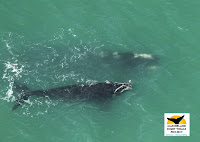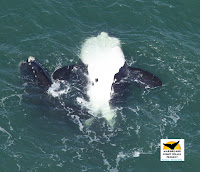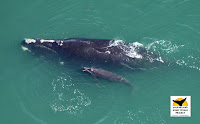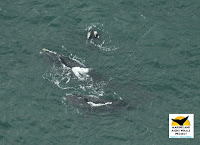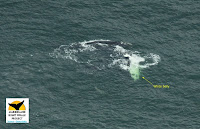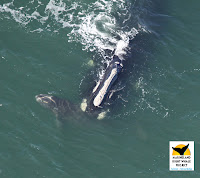Greetings to all! We trust that you had an enjoyable summer and fall and are looking forward to another year’s adventure with the whales. A couple of weeks ago, it was really feeling as though right whale season was fast approaching, with morning temperatures in the 50’s and the air conditioning turned off all day. The return to warmer days will end soon enough and it will be time to turn our eyes seaward in anticipation of the whales’ return.
Our eleventh season will get underway much the same as in past season, except that we are scheduling three training sessions instead of two. The extra one will be held in St. Augustine Beach to attract more interest in that area. The Flagler training session will be held on the west side of the Intracoastal Waterway, since so many volunteers come from Palm Coast. Here are the dates for these sessions, the orientation and survey dates. As with last season, we are planning for ten weeks of survey that we can shorten if the whales depart early.
The Right Whale Festival in Jacksonville Beach is returning for its second year and will give us the chance to celebrate the return of the whales to our area and raise awareness in the community. See below for details.
IMPORTANT DATES FOR THE SEASON
Training Sessions for new volunteers and anyone wanting a refresher.
Saturday, Dec. 4
9:30 am to 11:00 am
Flagler County Public Library
2500 Palm Coast Parkway, NW
Palm Coast
Saturday, Dec. 4
2:30 pm to 4:00 pm
Ormond Beach Public Library
30 S. Beach St., Ormond Beach
Thursday, Dec. 9
6:00 pm to 7:30 pm
Anastasia Island Branch
St. Johns County Public Library
124 Sea Grove Main St.,
St. Augustine Beach
«« Orientation Session for all volunteers, new and returning, who are planning to participate in the dedicated survey effort:
Sunday, Jan. 2
3:00 pm to 5:00 pm
Center for Marine Studies, Whitney Laboratory for Marine Bioscience
9505 Ocean Shore Blvd., Marineland
Surveys Start: Mon., Jan. 3
Right Whale Festival
The 2nd Annual Right Whale Festival will be held on Saturday, November 20, 2010 from 10:00 am to 4:00 pm at the Sea Walk Pavilion in Jacksonville Beach, Florida. The festival includes a beach clean-up, live music, kids’ activities, arts & crafts, exhibits, including Marine Resources Council and Marineland Right Whale Project, a silent auction and a beach run. Weather permitting, the AirCam will overfly the festival just before noon. The festival poster is attached. Please visit www.rightwhalefestival.org for more information.





